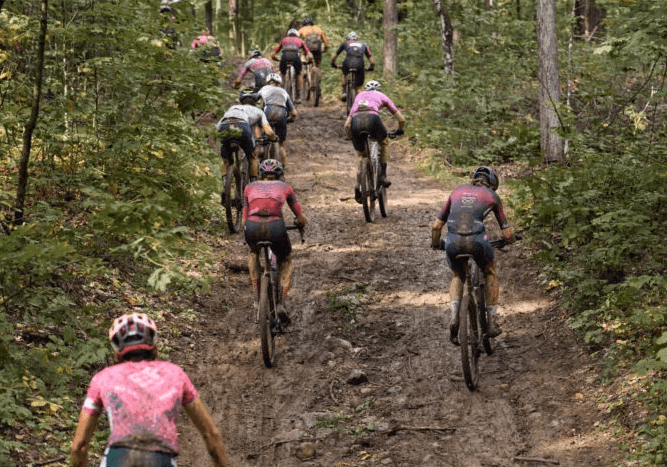
The ATB (all-terrain bicycle) or drop bar mountain bike is excellent for exploring, thanks to the development of gravel suspension forks and wider tire clearances. But racing is another matter.
I've been searching for a situation where such a setup will outperform a lighter rigid gravel bike or a lighter hardtail MTB for a long time. Although I hadn't yet discovered the ideal application, I thought there might be a competitive usage for such a rig. I looked into the Wisconsin race that had never crossed my mind until Lifetime revealed that the Chequamegon 40 would be the series' fifth destination.
I discovered that the occasion is special. The American Birkebeiner, the largest nordic event in the USA, is held there, and most of the action happens on the same Nordic ski trails. Due to the lack of challenging terrain, the race in the summer is made up of fairly wide, rolling grassy fields. Instead of narrow singletrack, there are a lot of sweeping bends.
Chequamegon's appeal is a widely accessible event in an era where competitions push the limits of endurance, vert, and terrain. I thought now could be the ideal opportunity to test out this frankenbike.
This summer, Big Tall Wayne and I traveled across the American West while calling my tech ally, Shimano's Nick Legan. Would it even be possible to combine enough pieces to make my gravel rig "mountain bike-size"? Yes, that was the response.
Shimano's groupsets are most effective and reliable when kept within their respective families, but mixing and matching are doable with the assistance of a knowledgeable mechanic. I got my Canyon Grazil ATB as a result. A drop bar, front suspension, and an old-fashioned tire selection would either offer me a competitive advantage or put me at a disadvantage. In the former, I felt confident.
My confidence increased after arriving and pre-riding. The route was quick and dry. If I could endure the rocky first half against the bigger bikes, the bike hooked up surprisingly well to the terrain, and the second part of the track was conducive to a road race drop bar tactical struggle.
Chequamegon's format is particularly distinctive because participants can set off at various start times because of the lower distances. The morning starts with the age groupers, while the afternoon is for the professionals. This results in a huge crowd that can watch the thrilling pro-race conclusion.
As Wayne and I waited in our hotel room for the time to change to "p.m.," we observed the crowds take off. Twenty minutes later, a heavy downpour arrived. It was pouring when the weather app predicted there would be a 10% probability of precipitation.
While we were fortunate enough to avoid getting rain on our heads, our circumstances resulted in an inevitable mud situation that would alter the entire course of the race. The circuit was changed into a soupy, muddy, rutty, cyclocross-style track with enough rain and 2500 riders in front of us.
As was to be expected, the race got off to a furious, nasty start that never lets up. For two hours of drag racing, it moved over the hills using pack dynamics. By the halfway point, only 15 of us remained due to attrition as riders gasped one by one over the arduous hills. My rivals even complimented me for maneuvering my dirt set up to stay competitive against their flat bars during a pause in the action!
They respected me, but could I do more?
My luck changed as we entered the second half and what ought to have been my favored terrain. Extreme mud was present. I chose gunked because of my rear tire's limited clearance and the front derailleur's 2x setup. Over Firetower Hill, the turning point in the route, I found it difficult to keep up and lost contact.

